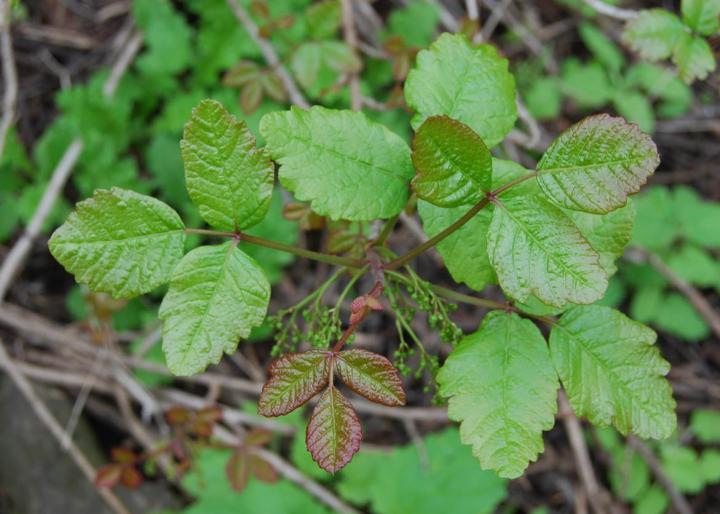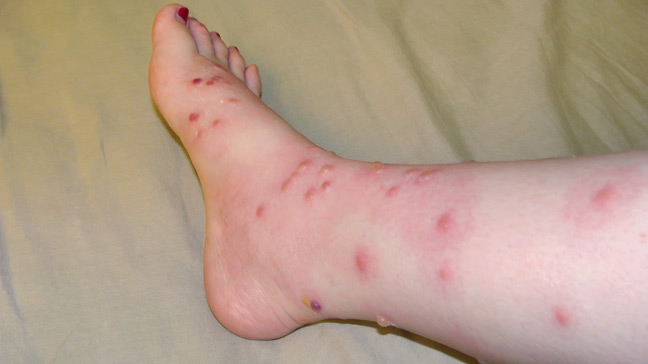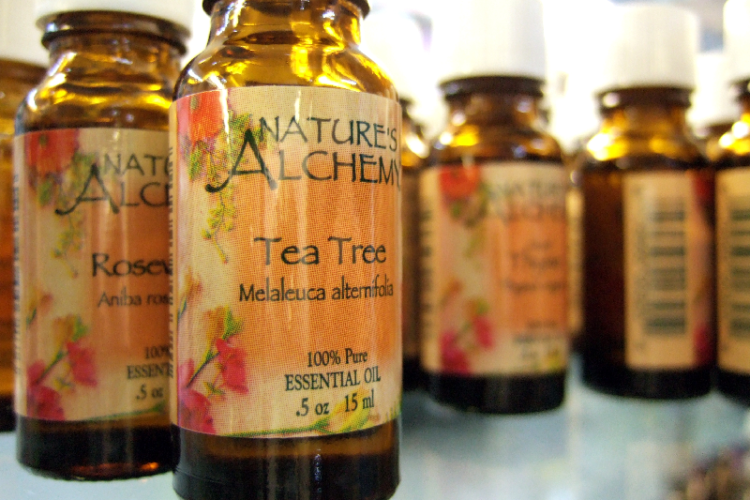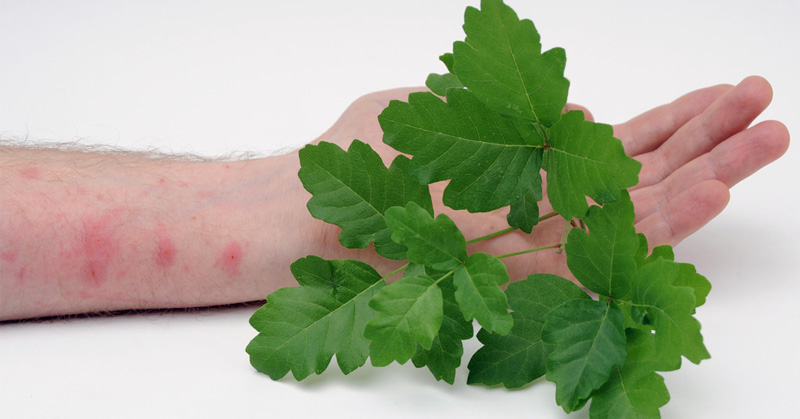Poison oak rashes are mild to severe skin rashes caused by touching the plant’s oily sap. The sap, called urushiol, causes an allergic reaction and immune response. A rash from poison ivy, oak, or sumac usually lasts one to three weeks. While a poison oak rash may heal on its own, you can soothe and help heal the rash with a natural poison oak treatment.

Poison Oak Symptoms
Urushiol is found in all parts of the plant, including the leaves, stems and roots. A rash often does not start developing and itching right away. About 12 to 72 hours after you come into contact with the oil a rash will develop.
Not everyone will have a reaction to poison oak. For those who do, poison oak symptoms usually include a rash that appears red or like red hives or streaks. The rash can develop anywhere on the body and involves itchiness or tingling.

Other poison oak symptoms include heat and swelling around the rash. In some cases small or large blisters will form. Sometimes the skin will ooze and a crust will form. This usually happens around blisters and goes away as they heal. With the blisters, a skin infection can possibly develop. Signs of an infection include a fever or having pus, pain, swelling and warmth around the site of the rash.
In most cases the rashes from poison oak, poison ivy and poison sumac will be indistinguishable. (1)

5 Natural Poison Oak Treatments
1. Prevent a Rash By Protecting Your Skin
Poison oak treatment starts by protecting your skin. One product called Ivy Block, a topical lotion sold at most pharmacies or drugstores, contains the ingredient called bentoquatam. This may block absorption of urushiol oil.
In addition to applying a barrier to your skin, it’s always a good idea to use protective gloves when gardening. Wearing gloves when working outside generally can be helpful.
Note that poison oak oil can linger on unwashed gloves or other equipment for weeks! Always wash gloves thoroughly afterward with soap and water after potentially touching poison oak.
If you suspect that urushiol is on your skin or clothes, wash your skin immediately and anything you were wearing. After touching poison oak, it’s estimated you have up to ten minutes to remove the oil before it causes a reaction.
You can also apply a product called Technu to the skin that works to remove the oil. But, it’s best when used right away (within one to three hours or less of contact).

2. Don’t Scratch! Leave The Rash Alone
If a rash begins to form, despite the tingling, redness and itching sensations, resist the temptation to itch or scratch. This can make the rash even worse and cause scratches or open cuts, which may become infected. Leave the rash alone as much as possible while it heals.
Only gently touch the affected area to cleanse it with lukewarm water and mild soap, or when applying ointment or a compress. Do not open up blisters or remove their crusty coating, since this actually helps with the healing process.
3. Cold Compresses & Oatmeal Baths
According to research, soaking in a lukewarm bath with oatmeal or Epsom salt can help reduce swelling and heat. (2)
Another poison oak treatment option is applying a damp towel to your skin. A damp, cold pillowcase that has soaked in some in cold water is also effective. (3)
You can also gently wrap the damp towel around ice. Gently press it against inflamed skin for 15–20 minutes at a time. You can apply a compress up to several times a day if needed, ideally about every three to four hours. Taking a cold shower may also help.
4. Use Ointment or Cream
After gently washing the affected skin, apply calamine lotion or hydrocortisone cream or lotion to reduce itchiness and oozing. Each product has individual instructions for dosage based on the strength of the product. You can apply most of these creams in generous amounts about 2–4 times daily. And, they are a safe poison oak treatment in most cases for children too.
5. Apply Essential Oils
Another important poison oak treatment is topically applying certain essential oils. The following oils may improve healing by lowering inflammation of the skin and preventing an infection from forming. Essential oils of tea tree, chamomile, geranium, rose, helichrysum and lavender all have these benefits. (4)

Signs of a Severe Allergic Reaction
Although a poison oak rash will likely go away on its own within several weeks, a severe rash can cause complications. Visit your doctor, or even the emergency room, right away if you notice the following symptoms. These can be a sign of a severe allergic reaction or infection that’s spreading:
- Very swollen eyes or patches on your face.
- Swollen mouth, tongue or difficulty swallowing.
- Trouble breathing normally.
- Your rash has spread to the point of covering most of your body.
- Very swollen, oozing blisters.
- The rash has spread to your genitals and is causing pain.
- Much of your skin itches, or nothing seems to ease the itch.


